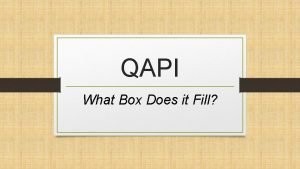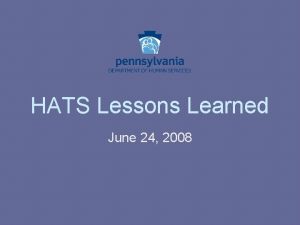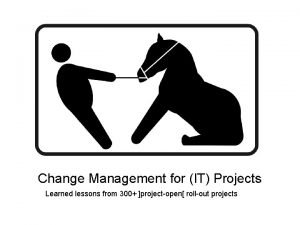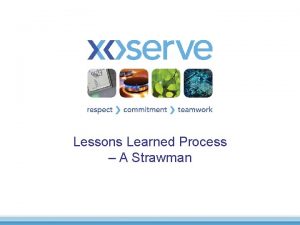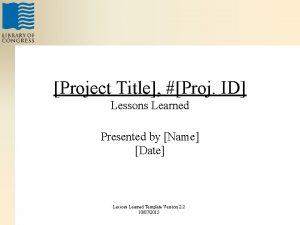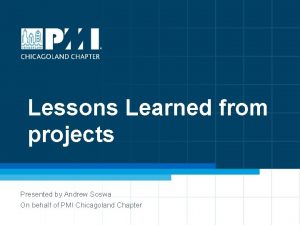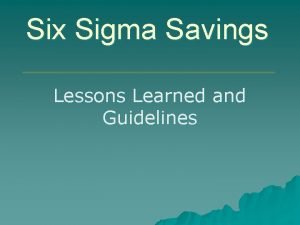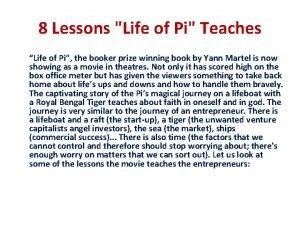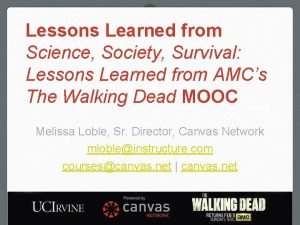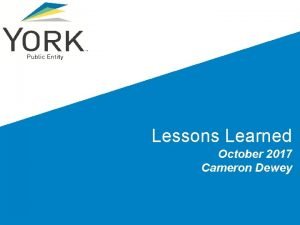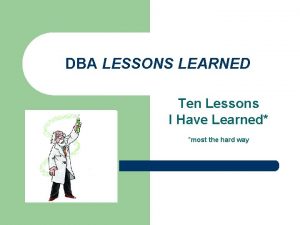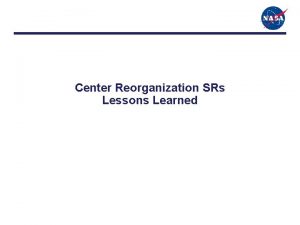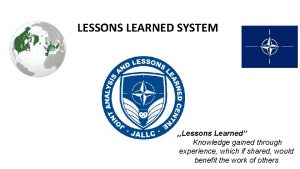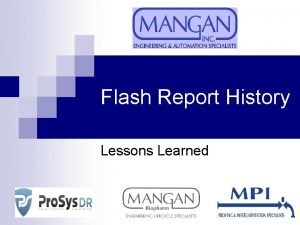QAPI in Action Lessons Learned Results Achieved A














- Slides: 14

QAPI in Action Lessons Learned, Results Achieved

A Brief History Before QAPI Came to Be: In 1990, the process started to create accreditation compliance with JCAHO. The basic principles: Measure Quality Indicators, Measure Customer Satisfaction, Audit for Opportunities, Revise Processes Initial Indicators: Falls, Pressure Sores, Medication Errors, Infections, Hospitalizations, Staff Turnover/Retention, Resident/Family Satisfaction. Added: Physician Performance, Polypharmacy, Psychoactive Drugs, Food Temps/Dining Satisfaction, Service Wait Times (call lights)

What Was Achieved? First organization in the nation to achieve all three (back then) JCAHO long-term care accreditations with commendation (skilled nursing, sub-acute, dementia). Throughout the Years…. Falls = 5% or less of average census in all facilities (over 300 SNF beds) Medication Errors = less than. 05% of all meds passed and dispensed (over 200, 000 administrations per month!) Staff turnover = less than 10% (1, 000 FTEs total) annually, average length of service = 10+ years Resident/Family Satisfaction = 98% rated the organization as 5 (excellent)

How Did this Happen? Less About Data, More About Analyzing the Data Set Expectations High and Measured Progress Audit, Improve, Re-Teach Integrated Disciplines Staff, Residents, Administration all Directly Tied to Quality Outcomes Compensation and Gain Sharing Tied to Quality Outcomes We Marketed Results Business Model Driven by Quality Innovations – Improvements Identified Equaled Business Opportunities.

Now In Kansas: A Current Example Fast Forward to 2011: Real Facility No Formal QA/QI Program 72 bed SNF Averaging 50 plus Falls per Month Call Light Response Times – 40% longer than 7 minutes with an average of 10% longer than 10 minutes Psychoactive/Anti-Psychotic Meds = 50% plus Weight Loss/Supplement Use = 50% of residents No resident satisfaction measures No monitoring of hospitalizations No audits Annual Survey 2011 – 3 Gs, 2 Fs, 2 Es, multiple Ds

Shifting the Paradigm – Putting QA/QI in Action Build the Foundation – Audit the “GAP” Set Expectations/Targets Build the Team – all disciplines Build the Tools and Processes Gradually, add and monitor, Indicators Focus on the Data – Weekly Clinical Review, Monthly QA/QI meeting Build core competency – staff education, training, accountability Audit more, identify more, re-direct processes

What Happened Actual Results – 2011 to 2012 – about 15 months post-survey Falls – from an average of 50 or more to an average of 10 or less Anti-Psychotics/Psychoactive Medications – 5 residents total, each with a history of mental illness – none used for dementia Supplements – gone, except for one or two hospice residents. Weight Loss – gone! Dehydration – gone! Total Meds – reduced by over 1/3 and falling Survey in 2012 – deficiency free!

Today and Going Forward Today, they monitor falls, med errors, infections, care transitions, drugs, weight loss/dehydration, CASPER, skin/wound, ADL decline, call light response times, aspiration/dysphasia risk, unusual occurrences (bruises, theft, unusual behaviors, skin tears, etc. ), resident satisfaction. View and analyze trends, discuss monthly, target improvement, focus on education and information. Target audits for gaps, compliance and process improvement. QA Committee – chaired by CEO, board participation, all disciplines, CNA representation, senior management. Reports to Board Quality and Compliance committee

Audits are Key Need to use “outside” resources – can’t audit yourself! Six standard audits plus focused others; Medicare/Billing Medicare/Clinical Documentation and Careplans Clinical – careplans, documentation, hospitalizations, care transitions Pharmacy – meds, polypharmacy, black box, etc. Mock Survey Resident Focus Groups, Surveys, etc. Audits Drive Improvements, Identify Weaknesses Audits Drive Education

Where Innovation Arrived! QA/QI is about assuring standards of excellence first but the key is always to drive improvement – doing things different! What We Learned and Now Do Different; Therapies in-house, not contracted – huge improvement in falls, dysphasia management, etc. Moving to automated dispensing – reduce wait times, errors, staff time, patient cost Implementing more protocols and algorithms – disease management, standing orders, etc. Focusing in on behavior management using non-pharm interventions. Implemented TCI training for all staff.

Lessons Learned Support and Expectations Must Come from the Top! Wide Representation of Staff Required – Include CNAs, Activities, Social Work, Physicians, etc. Look Beyond Healthcare and the Industry – Best Practices can be readily gained from like circumstances! Use Resident/Family Feedback as a Key Source for Improvements. Utilize outside resources to audit! Be Critical! Don’t perceive milestones as a stopping point for improvement.

Start Your Own Process! Best Place to Start – Get Audited! Complete a mock survey, do a compliance check, conduct focus groups. Use the above information to identify key outcome gaps and process flaws. Build your team! Develop your mission, vision and policy statements. Identify roles and responsibilities – build the organizational components. Educate – What are we doing? Why are we doing this? Where are we going? How will get there? Start slow and track and monitor outcomes - build slow.

Critical Elements: Must Have for Success Support and Participation from Senior Management Support from Governance – Ideally, Involvement as Well Participation from all disciplines, all levels of staff Audit partners – these must be people from the outside! Education Components A structure that includes a specific policy, set of tasks, duties, responsibilities, accountability, etc. Record keeping functions A system for data gathering A system for reporting

Best Practice QA/QI: My Take Process also reviews and approves, policies and protocols Process incorporates education at the committee level – sharing research, articles, conferences, etc. All other initiatives, committees, roll-up to QA/QI – credentialing, infection control, behavior management, P&T, etc. Starting point for compliance/survey and accreditation prep and readiness. Repository and laboratory for issues, ideas, and challenges where discussions can occur without risk exposure. Clearing house and library for information and
 Weak corrective action qapi
Weak corrective action qapi Lessons learned ground rules
Lessons learned ground rules Change management lessons learned
Change management lessons learned Lessons not learned in blood
Lessons not learned in blood Lessons learned purpose
Lessons learned purpose Risk management lessons learned
Risk management lessons learned Lessons learned repository
Lessons learned repository Lesson learned register
Lesson learned register What are the five philosophies we can learn from the ants
What are the five philosophies we can learn from the ants Workday claremont colleges
Workday claremont colleges Lessons from the book of obadiah
Lessons from the book of obadiah Lessons learned suomeksi
Lessons learned suomeksi Six sigma lessons learned
Six sigma lessons learned Lessons learned faa
Lessons learned faa What i need to learn in life of pi
What i need to learn in life of pi
